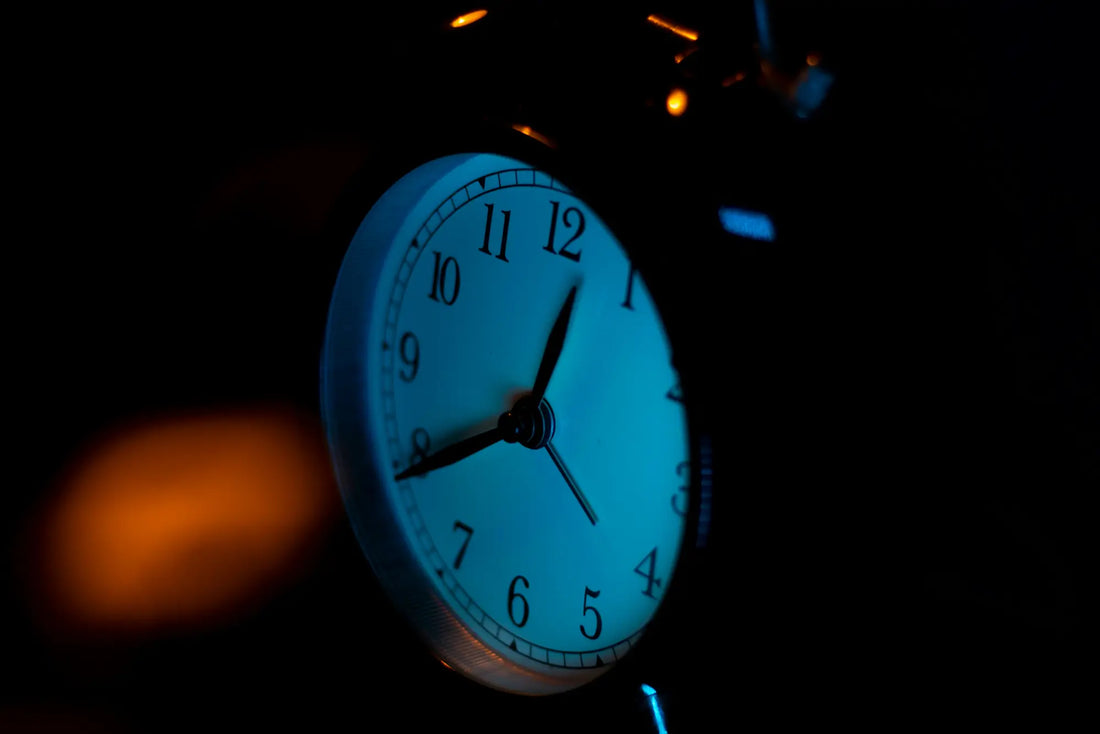Cortisol and Circadian Rhythm: Resetting Balance With Cold Plunges

Stress and sleep struggles have become the silent saboteurs of modern performance. You can optimize your diet, train hard and even invest in the latest wearables, but if your cortisol and circadian rhythm are off balance, everything else feels harder. Cortisol is meant to wake you up ready for the day then step back at night so melatonin can guide you into deep sleep. When that rhythm flattens or flips, fatigue, poor recovery and irritability follow.
This is where cold plunges come in. Strategic cold exposure taps into your body’s natural rhythms, helping you realign cortisol peaks and valleys with your circadian clock. At the end of this guide, you’ll see how simple affordable tools like DIY plunge tubs can transform stress into resilience and fatigue into focus. At Plunge Crafters, we make it possible to build a home cold plunge setup designed for performance, recovery and everyday wellness without the luxury price tag.

What Are Cortisol And Circadian Rhythm?
To understand why cold plunges work, you need to know the basics of circadian rhythm and cortisol. Cortisol is often mislabeled as just a stress hormone but it also fuels energy production, regulates inflammation and keeps blood sugar steady. Circadian rhythm is your internal 24-hour clock syncing processes like sleep, digestion and hormone release to the day-night cycle.
When these two systems are in sync, you feel energized in the morning, focused during the day and ready to wind down at night. But stress, poor sleep and late-night habits often scramble this rhythm, leaving cortisol levels mistimed. That misalignment is what cold plunges can help recalibrate.
Cortisol As The Body’s Stress Hormone
Cortisol is produced by the adrenal glands through the hypothalamic-pituitary-adrenal (HPA) axis. It gives you the energy boost you need under pressure, keeps your immune system on guard and helps your body respond to challenges. Short bursts are healthy but chronic elevation or mistimed release is harmful.
How Circadian Rhythm Regulates Your Internal Clock
Your circadian rhythm is mainly influenced by light and darkness. Morning sunlight signals your brain to raise cortisol and boost alertness. Darkness at night triggers melatonin to rise while cortisol falls. This delicate balance depends on consistency. When disrupted, energy dips, mood swings and poor sleep follow.
The Daily Cortisol Cycle Explained
In a healthy rhythm, cortisol spikes within 30–45 minutes of waking then declines gradually until hitting its lowest point late at night. This pattern prepares you for daytime performance and nighttime recovery. Flattened curves from stress or irregular schedules lead to grogginess in the morning and wired-but-tired nights.
The Science Behind Cortisol And Circadian Rhythm
Understanding how circadian rhythm and cortisol levels interact starts with the HPA axis. This system links your brain to your adrenal glands, regulating cortisol release on a predictable schedule. Stress or misaligned behaviors throw this off, weakening the natural rhythm.
The Role Of The HPA Axis
The HPA axis is the control center for cortisol. It works in response to external cues like light, food and stress. When operating smoothly, it creates a strong cortisol awakening response in the morning and a steady taper through the day.
The Cortisol Awakening Response (CAR)
The cortisol awakening response is the sharp rise after waking. It sets the tone for your energy and alertness. A robust CAR means better focus and resilience. A blunted CAR is linked to fatigue, brain fog and lowered stress tolerance.
Why Cortisol Peaks In The Morning And Drops At Night
Cortisol is meant to follow a curve that matches natural light exposure. The peak energizes you in the morning to take on challenges. The nighttime drop clears the way for melatonin, enabling deep restorative sleep. This evolutionary rhythm helps conserve energy while preparing for recovery.

How Does Cortisol Affect Our Circadian Rhythm And Sleep Cycle?
So, how does cortisol affect our circadian rhythm and sleep cycle? By directly interacting with melatonin. When cortisol rises at the wrong time, it blocks melatonin and makes it harder to fall or stay asleep. At the same time, poor sleep triggers more cortisol the next day, creating a loop that drains energy and resilience.
Cortisol’s Connection To Melatonin
Melatonin and cortisol operate in opposition. One rises when the other falls. Elevated nighttime cortisol delays melatonin, leading to restless sleep and morning fatigue. Cold plunges can help by reinforcing timing cues that bring these hormones back into balance.
Cortisol And Deep Sleep Quality
Deep sleep is when your brain repairs and your body recovers. Excess cortisol keeps the nervous system in a fight-or-flight state, reducing time spent in these stages. For high performers, this undermines the very recovery they train for.
Disruptions From Stress, Shift Work And Lifestyle Factors
Late-night screen time, caffeine, shift work or constant stress all flatten cortisol rhythms. These disruptions dull the morning spike and elevate night levels, producing a mismatch with the circadian clock. Resetting requires deliberate interventions and cold plunges are one powerful option.
Cold Plunges As A Reset For Cortisol And Circadian Rhythm
Cold plunges harness hormesis, the principle that short controlled stress strengthens long-term resilience. For cortisol and circadian rhythm, this means better regulation of hormone timing and reduced baseline stress.
Acute Stress And Cortisol Regulation
Cold exposure temporarily raises cortisol but the body adapts by lowering baseline levels over time. This makes the system more efficient, preventing chronic overstimulation.
The Parasympathetic Rebound Effect
After the plunge, the nervous system shifts into rest-and-digest mode. This rebound promotes relaxation, lowers cortisol and restores balance. Regular plunging strengthens this feedback loop.
Why Cold Exposure Strengthens Daily Hormonal Patterns
Morning plunges help reinforce the cortisol awakening response, while evening plunges timed properly assist with the nighttime drop. Over time, these consistent cues retrain your body to follow a healthier rhythm.

Timing Cold Plunges For Maximum Circadian Benefits
Timing matters as much as consistency. Each window offers unique benefits for aligning cortisol with circadian rhythm.
Morning Cold Plunge For Energy And Alertness
A plunge within an hour of waking amplifies the morning spike. This boosts alertness naturally, reducing the need for excess caffeine. Many high performers find it sets the tone for discipline and productivity.
Afternoon Cold Plunge For Stress Reset
Plunging midday counters the buildup of stress hormones. It provides a physical and mental reset that improves focus and prevents late-afternoon crashes.
Evening Cold Plunge For Better Sleep
When taken 2–3 hours before bed, a plunge helps lower core body temperature and cortisol levels. This prepares the body for melatonin release and deeper rest. Timing is crucial — plunge too close to bed and the initial stimulation may interfere with sleep.
Finding The Best Cold Plunge For Home Use
Once you understand the benefits, the next step is setting up your own. Choosing the best cold plunge depends on budget, space and goals. At Plunge Crafters, we specialize in systems that balance affordability with performance.
Cold Plunge Temperature Ranges To Aim For
For most people, a cold plunge temperature between 50–59°F delivers benefits without being overwhelming. More advanced users may go colder but consistency beats extremity.
Choosing Between A DIY Setup And Plug-And-Plunge Tub
DIY setups offer affordability and customization, while plug-and-plunge tubs provide convenience. These options are ideal for those wanting an instant solution. At Plunge Crafters, we offer both so users can start simple and scale their setup over time.
Features That Matter For A Home Cold Plunge
Durability, insulation, reliable cooling and filtration are must-haves. An home cold plunge should be easy to maintain and designed for long-term use. Adding upgrades like dedicated water chillers enhances control and consistency.
FAQs About Cortisol, Circadian Rhythm And Cold Plunges
Can Cold Plunges Lower Cortisol Long-Term?
Yes. Regular cold exposure helps lower baseline cortisol and trains your body to regulate stress hormones more effectively.
How Long Should I Stay In A Cold Plunge?
Two to five minutes is a sweet spot for most beginners. You don’t need extreme sessions to see results — consistency is what counts.
Do Cold Plunges Replace Other Stress-Management Practices?
No. They work best alongside good sleep hygiene, exercise and nutrition. Plunges are a cornerstone of a balanced recovery routine, not the sole pillar.
Reset Your Cortisol And Circadian Rhythm With Plunge Crafters
Balanced hormones mean sharper mornings and deeper nights of rest. Cold plunges are a science-backed way to reset cortisol and circadian rhythm while building resilience into your routine. Start your journey today with Plunge Crafters and explore the tools that make recovery accessible at home.
If you’d like to learn more about who we are and what drives our mission, visit our About Us page. For any questions about building your cold plunge setup, don’t hesitate to contact us, our team is here to help every step of the way.

